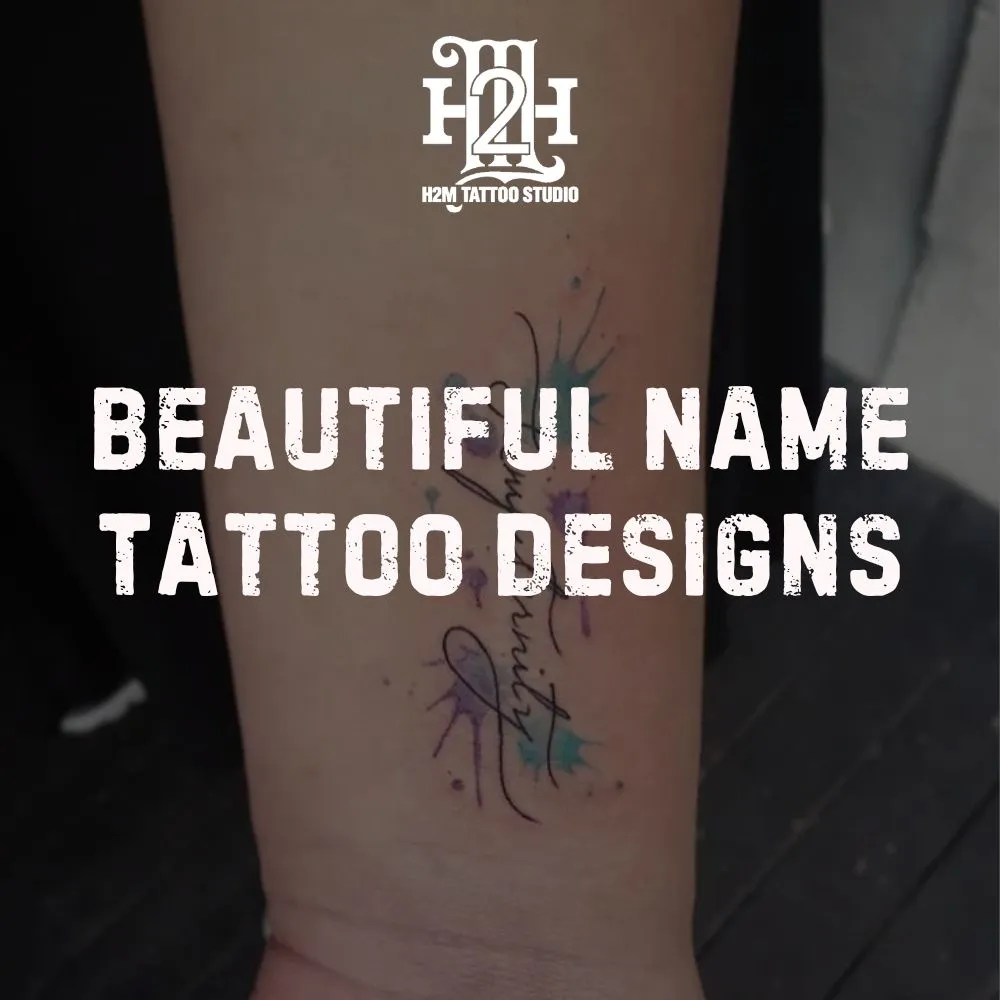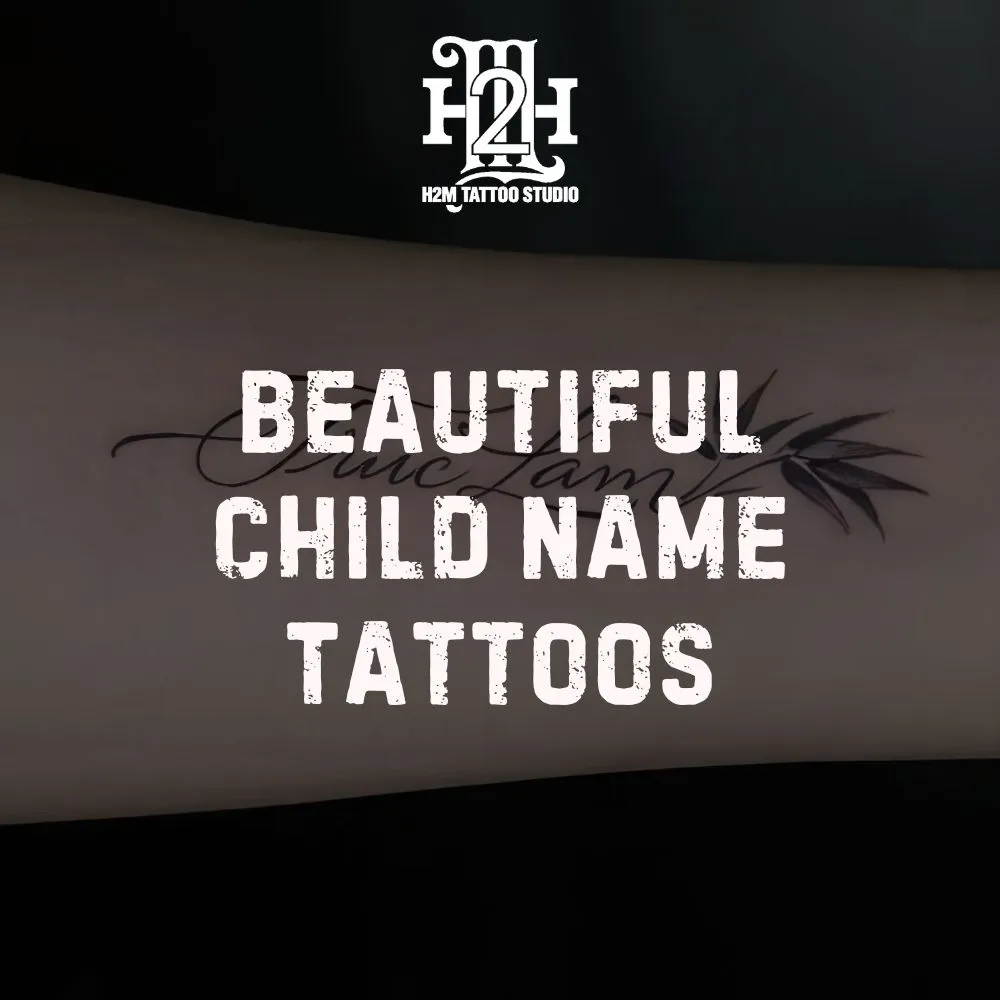The question is nearly universal: "Does finger tattoo hurt?". If you're considering a small, discreet piece of art on your fingers—a symbol, a ring, or a tiny portrait—you’ve likely been warned. Finger tattoos are among the most popular placements, yet they are also notoriously ranked as one of the most painful. This isn't just an old wives' tale; there's a solid anatomical and physiological reason behind the reputation.
At H2M Tattoo Studio, we believe that understanding the pain before you sit in the chair is the most critical step toward a successful, positive experience. We want to set realistic expectations regarding the sensation, intensity, and duration of the pain, so you can walk in prepared and confident.
While the pain is significant, it is absolutely manageable. This comprehensive guide will walk you through the anatomy of finger pain, compare it to other tattoo placements, and give you expert-backed strategies for a more comfortable session. Let’s dive into why your fingers are so sensitive.
Anatomy of Finger Tattoos: Why They Hurt More
The simple answer to why finger tattoos hurt more lies in the unique structure of the hand. Unlike areas like the bicep or calf, your fingers lack the natural padding that helps cushion the sensation of the needle.
- Thin Epidermis and Low Fat: Fingers have an extremely thin layer of skin (epidermis) and almost no subcutaneous fat. This lack of cushioning means the tattooing needle is operating very close to the underlying structures, intensifying the vibrational and puncture sensation.
- Proximity to Bone: The needle essentially vibrates directly against the knuckle and finger bones, especially on the top and sides. The periosteum (the membrane covering the bone) is highly sensitive, and the close proximity often elevates the perceived pain level significantly.
- Dense Nerve Endings: Your hands and fingers are the most nerve-dense areas of your body. Think about it: they are your primary tools for sensation and manipulation. A higher concentration of nociceptors (pain receptors) means a greater number of signals are fired off to your brain with every puncture.
- Medical Rationale: The tattooing process activates these dense nerve bundles, creating a sharp, localized, and often high-intensity pain response. The combination of minimal fat, thin skin, and numerous nerve endings makes the finger a perfect storm for heightened tattoo pain.
This anatomical reality directly influences the specific sensation you’ll feel during the session.

>>>> READ MORE: Does tattoo retouching hurt ? A Complete Expert Guide
Describing the Pain Sensation: What Does It Feel Like?
It's one thing to say a finger tattoo hurts, but what does the pain actually feel like? Most clients report a distinct sensation that differs from the dull throbbing of a fleshier area.
The typical pain sensations include:
- Sharp, Focused Stinging: The initial entry of the needle feels like a concentrated, intense sting, similar to a bee sting or a constant pinprick.
- Buzzing Vibration on Bone: When the artist tattoos over the knuckles or sides of the finger, the sensation is often described as a deep, rattling vibration that travels down to the bone.
- Intense, Localized Burning: Over time, especially during shading or line-work on the same spot, the area can start to feel hot and intensely burning.
Pain Onset, Intensity, and Duration:
The intensity is usually high from the very first minute, but because finger tattoos are typically small and short in duration (often under an hour), the overall duration of the extreme pain is relatively brief. Most people find the short, sharp burst of pain much more tolerable than the prolonged, deep ache of a rib or thigh tattoo.
Furthermore, psychological factors play a huge role. Being relaxed, trusting your artist, and not fixating on the pain can significantly lower your perceived discomfort. A client who is anxious will almost always report a higher pain level.
>>>> READ MORE: Does wrist tattoo hurt ? A Comprehensive Guide from H2M Tattoo Studio
Pain Scale: How Finger Tattoos Compare to Other Body Areas
To help you mentally prepare, we place the pain of a finger tattoo on the standard 1-10 pain scale used across the industry.
| Tattoo Location | Pain Level (1-10) | Rationale |
| Finger | 7-9/10 | Minimal fat/skin, high nerve density, close to bone. |
| Inner Bicep/Calf | 4-6/10 | Medium skin, good muscle/fat padding. |
| Ankle/Foot | 6-8/10 | Thin skin, close to bone, high nerve activity. |
| Ribs/Spine | 8-10/10 | Extremely thin skin, direct contact with bone. |
| Thigh/Forearm | 3-5/10 | High muscle/fat padding, generally low nerve sensitivity. |
Why the Variation?
The reason the pain is rated so high is, as noted, the lack of padding. A 7/10 pain on your finger may not be as enduring as an 8/10 on your ribs, but the sharpness and intensity of the sensation is what drives the high score.
It's crucial to remember that this scale is subjective. Your individual pain tolerance—which is influenced by genetics, previous tattoo experience, and even your current mood—will ultimately determine your personal experience.

>>>> READ MORE: Does back tattoo hurt ? Pain Guide & Tips from H2M Tattoo Studio
Key Factors Influencing Pain Levels in Finger Tattoos
While the anatomy of the finger is the main determinant of pain, several other factors can significantly increase or decrease your comfort level. Being aware of these can help you better manage your session.
- Tattoo Size, Detail Level, and Session Length:
- A small, simple line-work tattoo (like a single symbol) will hurt for a short, intense burst.
- A larger, detailed, or heavily-shaded tattoo (like one covering the entire side of a finger) will involve a longer session, leading to cumulative pain and increased skin trauma. The pain level increases as the session drags on.
- Skill and Technique of the Tattoo Artist:
- An experienced artist at a reputable studio like H2M Tattoo Studio understands the delicate nature of finger skin. They will use the lightest necessary hand, ensure the needle depth is precise, and work efficiently to reduce skin trauma and keep the session brief. Poor technique can lead to "blowouts" (ink spreading) and unnecessarily prolonged pain.
- Individual Health and Skin Condition:
- Skin Condition: If your finger skin is excessively dry, cracked, or sunburned, it will be more sensitive and painful to tattoo.
- Hydration/Nutrition: Being well-hydrated and having a substantial meal an hour before your appointment stabilizes your blood sugar, which helps your body manage the stress and shock of the pain.
- Emotional State and Psychological Readiness:
- Anxiety and fear literally tighten your muscles and heighten your pain sensitivity. Approaching the session with a calm, positive, and prepared mindset can be one of your most effective pain management tools.
>>>> READ MORE: What are the least painful places to get a tattoo? Your Complete Pain-Free Guide
Risks, Trade-offs, and Considerations Related to Finger Tattoo Pain
Committing to a finger tattoo means accepting certain trade-offs, many of which are related to the high-pain environment and the subsequent difficult healing process.
Potential Pain-Related Complications:
- Infections: Because your hands are constantly exposed to germs, the risk of infection is higher. An infection dramatically increases pain, swelling, and can ruin the tattoo design. Diligent aftercare is non-negotiable.
- Prolonged Healing/Swelling: Excessive movement and poor care can extend the painful, swollen phase beyond the first few days.
Trade-Offs to Consider:
- Pain Level vs. Visibility: You endure a higher pain level (7-9/10) for maximum visibility. Finger tattoos are nearly impossible to hide.
- Pain Level vs. Longevity: You endure the pain knowing the tattoo has a higher chance of fading and requiring touch-ups (more pain/cost later). This is a unique trade-off for this location.
When Finger Tattoos Might Not Be Advisable:
If you have extremely poor circulation, conditions that affect skin healing (like severe eczema or psoriasis on the hands), or an extremely low pain tolerance that causes you to move excessively during the session, it might be best to choose a less sensitive location. Always consult your artist about skin conditions beforehand.

Conclusion: Making an Informed Choice About Finger Tattoo Pain
So, does a finger tattoo hurt? Yes, it is undeniably one of the more painful places to get tattooed, ranking high on the pain scale due to the lack of padding and high nerve density.
However, the pain is brief, manageable, and temporary. By focusing on the short session length and using effective pain strategies—like deep breathing, distraction, and choosing a highly skilled artist—you can successfully navigate the process.
At H2M Tattoo Studio, we encourage every client to weigh the trade-offs: the sharp pain and high touch-up likelihood versus the appeal of an immediate, visible piece of art. The power of a finger tattoo is often worth the short burst of discomfort.
Ready to take the plunge? Consult our experienced artists today to discuss your design, pain management options, and comprehensive aftercare plan. We're here to make your unique vision a comfortable reality.
>>>> NOTE NOW:




